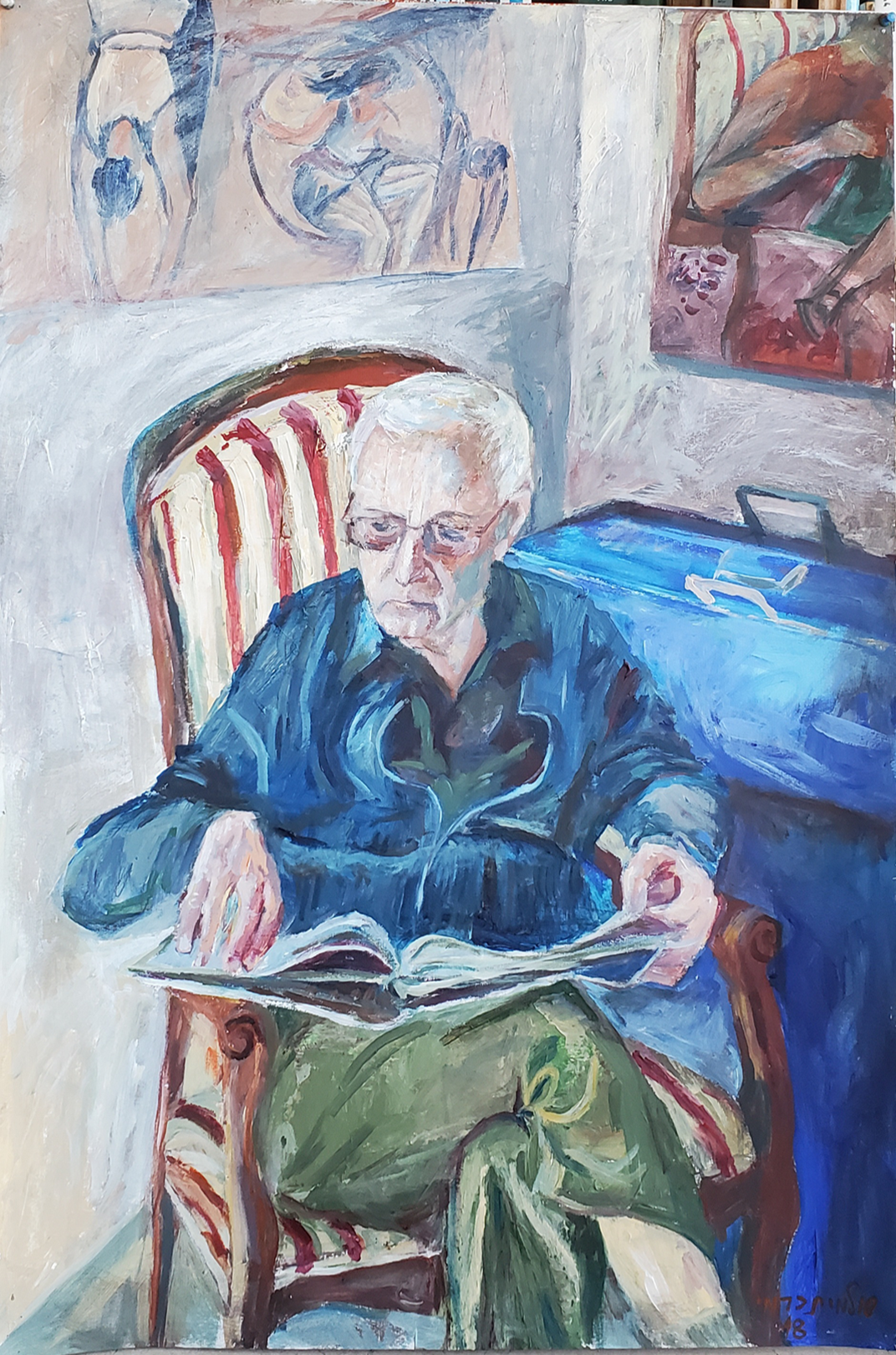
Israel Carmi (1935–2021) in a portrait by his wife, Shulamit.
Israel Gavriel Carmi was born on April 2, 1935, and died on September 14, 2021, in the same house where he was born. He left a wife, three children, and six grandchildren. He was a dear friend of many in the radiocarbon community and many remember him as the Chairman of the 17th Radiocarbon Conference in 2000 in Jerusalem. The 2001 Radiocarbon proceedings volumes contain a short history of his career, as he retired from Director of the Rehovot radiocarbon laboratory at the time of the Conference.
Dr Carmi was the director of the Rehovot Radiocarbon laboratory for 32 years and even after he retired, he continued to be very active in radiocarbon research by obtaining his PhD on CO2 in soil and groundwater from the Tel Aviv University. A few papers were published from his research during and after his PhD.
He was a scholar with a great enthusiasm for science and research, always ready to confront himself with new challenges. He was not confined to radiocarbon research. Once the liquid scintillation technique was introduced in the laboratory, Israel did an extensive measurement program of tritium in Israel water bodies and rain with the data being included in the larger tritium survey of the International Atomic Energy Agency. Later in the 1990s together with the late Prof Israel Dostrovsky, he was involved in the Gallex experiment under the Gran Sasso (Italy) for the determination of the neutrino flux from the Sun.
Certainly, his major interest in science was in radiocarbon dating, and among the thousands of samples that were prepared in the laboratory first for gas proportional counters and later for the liquid scintillation counters, the “Jesus Boat” cannot be forgotten. The 2000-year-old boat is the central piece in the Ginossar Museum near the Kinneret lake. Israel will also be remembered for the dating of the Dead Sea Scrolls in collaboration with the Zurich radiocarbon laboratory.
Israel was not only a researcher, but also a fine piano player. He was born to a musical family, his father being a violinist and chemist. Israel studied piano, French horn, and composition and he continued to play piano often in small groups, for fun, friends and family. Everybody in his family also has a passion for music or art. Shulamit, his wife created the painting shown here of Israel reading a book. I think the colors in this painting well represent Israel’s joyful character, enthusiasm for science, and kind nature.





